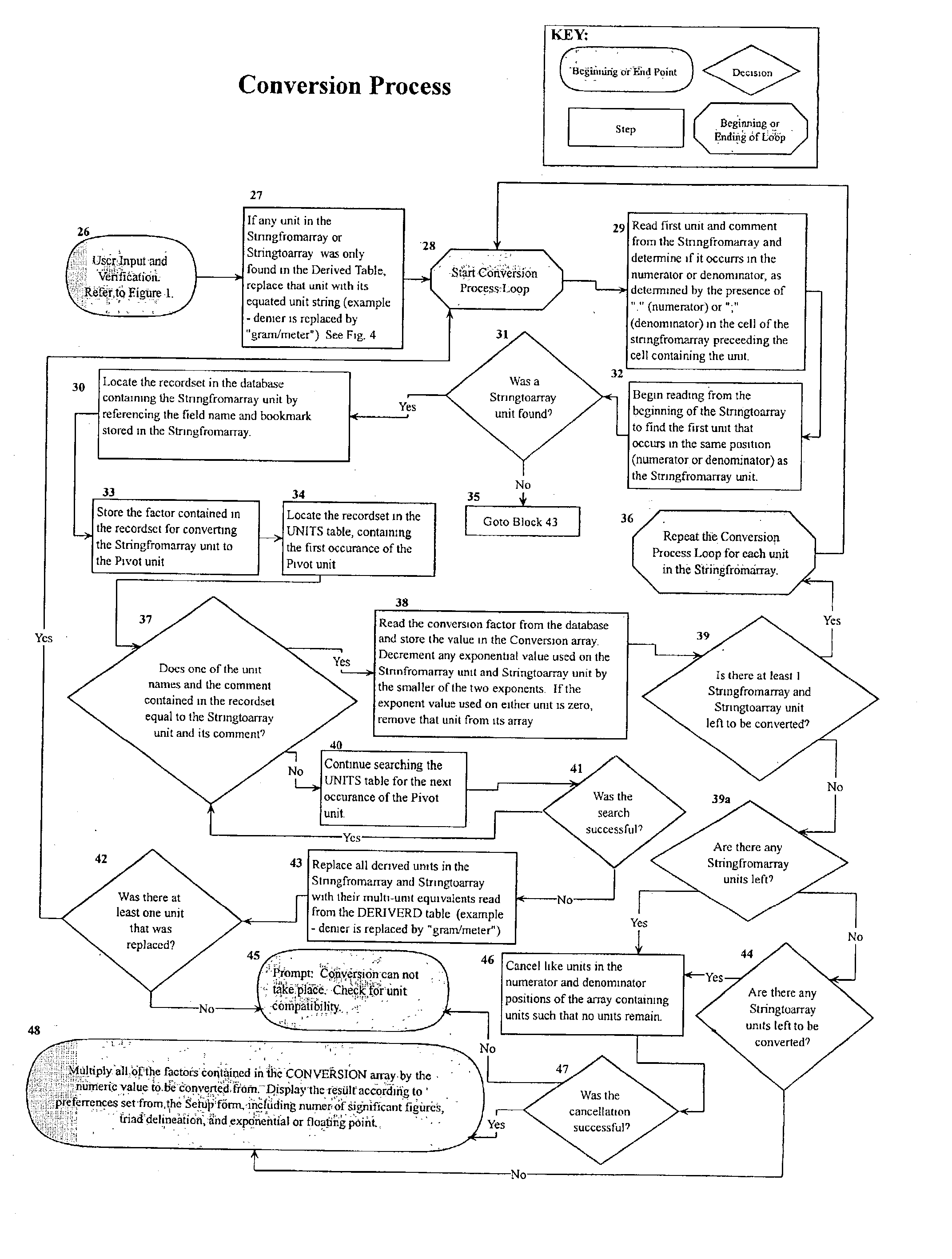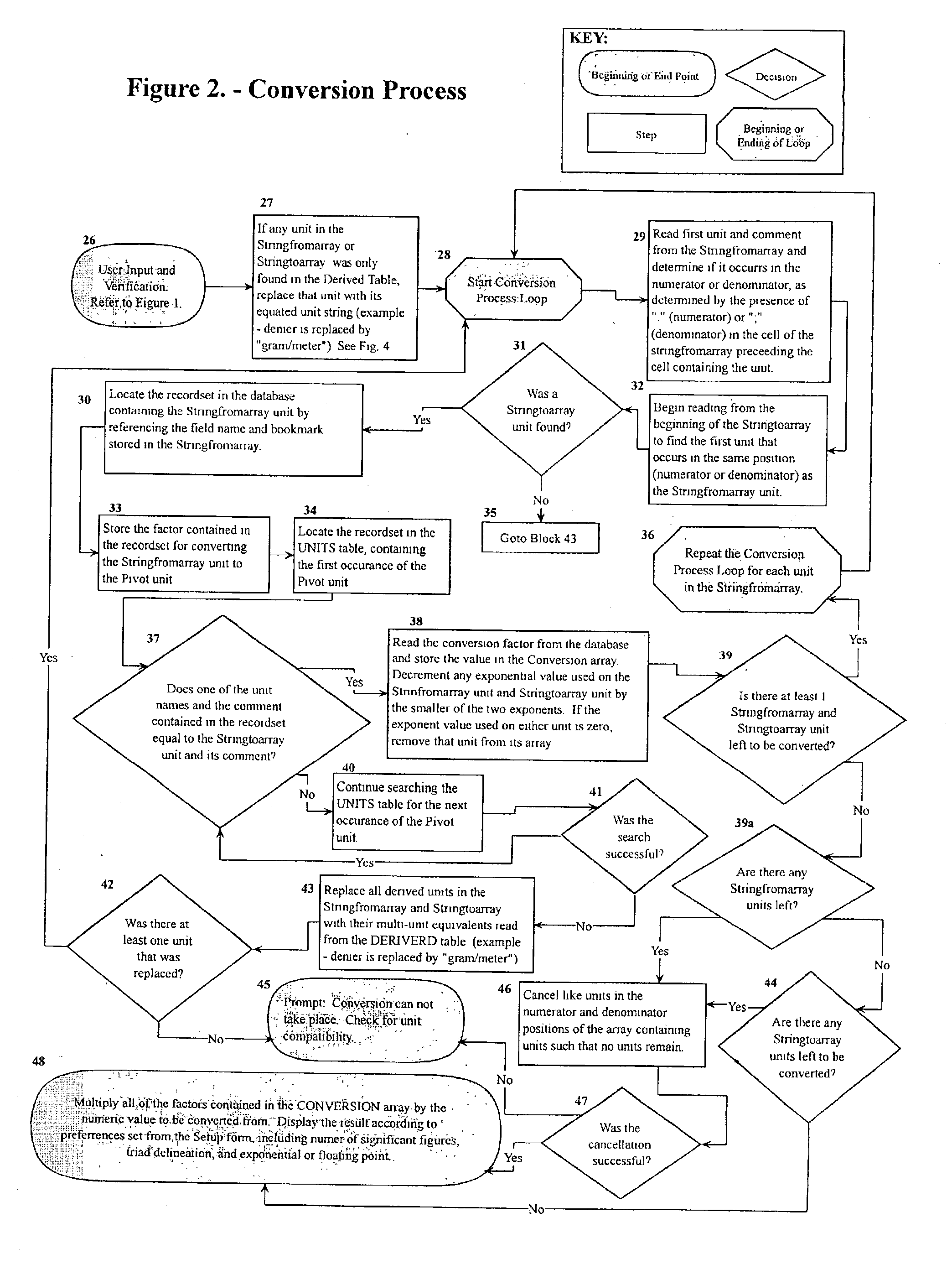Method for converting units of measurement
a technology of units of measure and conversion method, applied in the field of conversion method of units of measure, can solve the problems of limiting either conversion method, requiring incremental and manual conversion of units within a category, and laborious task of finding units
- Summary
- Abstract
- Description
- Claims
- Application Information
AI Technical Summary
Benefits of technology
Problems solved by technology
Method used
Image
Examples
Embodiment Construction
--
[0048] The present invention is specifically tailored to a calculating device such as a desk-top calculator, hand-held calculator, desk top computer, lap top computer, palm computer and the like, that can be programmed, either through hardware or software, to carry out the steps of the following description.
[0049] Operation--
[0050] Referring now to FIG. 1, Beginning Point 1 describes the first step of the conversion process--Input. A numeric value or an equation that can be evaluated to a numeric value, indicating the scalar quantity of the unit or plurality of units to be converted from is entered. Next, the User inputs the singular unit, or plurality of units separated by arithmetic symbols, to be converted from, hereafter referred to as the From Unit String. Lastly, the User inputs the singular unit, or plurality of units separated by arithmetic symbols, to be converted to, hereafter referred to as the To Unit String. If a plurality of units is entered, each unit may be separat...
PUM
 Login to View More
Login to View More Abstract
Description
Claims
Application Information
 Login to View More
Login to View More - R&D
- Intellectual Property
- Life Sciences
- Materials
- Tech Scout
- Unparalleled Data Quality
- Higher Quality Content
- 60% Fewer Hallucinations
Browse by: Latest US Patents, China's latest patents, Technical Efficacy Thesaurus, Application Domain, Technology Topic, Popular Technical Reports.
© 2025 PatSnap. All rights reserved.Legal|Privacy policy|Modern Slavery Act Transparency Statement|Sitemap|About US| Contact US: help@patsnap.com



